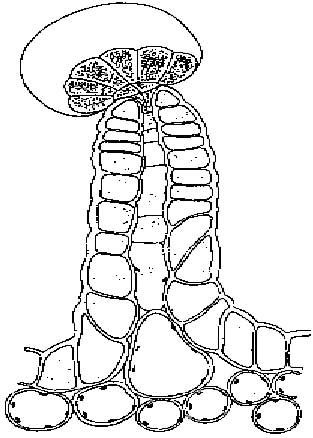|
UVSS HEMPOLOGY 101 CLUB LESSON #6 : CANNABIS CHEMISTRY - Part 1 |
|
|
The complex chemical relationship between cannabis and the human body leaves little doubt that our ancestors were eating vast amounts of cannabis seed and leaf for a long period of time. Cannabinoid systems have been used by organisms to regulate body functions for about 600 million years. After helping to discover THC in the 1960s, Dr. Rapael Mechoulam of Hebrew University and other researchers discovered in 1992 that the body generates an endo-cannabinoids, anandamine, which means bliss in Sanskrit. They called the chemical they discovered an endo-cannabinoid because it was very similar to THC and other cannabinoids, and anandamine seemed to have basically the same effect. Many other endo-cannabinoids and receptor sites have since been discovered in humans and other species. The primary role of endo-cannabinoids appears to be the regulation of various bodily functions. Of the almost 70 cannabinoids present in cannabis, tetra-hydrocannabinol, or THC, is by far the most studied as it is responsible for most of the euphoric effects from consuming the plant. THC forms in beautiful crystals on the leaves and buds, forming a shape that looks like a glass mushroom. THC is viscous hydrophobic oil- has a strong aversion to water- that does not evaporate easily, which means it is of low volatility. THC also resists crystallization. However, some of the other cannabinoids do have mild psychoactive and/or psychotropic properties, like cannabinol (CBN), cannabindiol (CBD) and cannabigerol (CBG). Other chemicals appear in the plant called terpenes and flavonoids that also have medical benefits that have never been studied. The interaction of these cannabinoids, terpenes and flavonoids generates a broad range of medical impacts that cannot be duplicated easily by synthetic drugs which usually only contain one or two different chemicals. Each plant only contains 6 to 12 different cannabinoids, which is why each strain has a different mental and physical effect. Even on the same plant there will be different amounts of these cannabinoids in different places on the plant, for example, there is less THC on the larger fan leaves than there is on the buds. These are some of the factors that make cannabis almost impossible to accurately synthesize. Only a handful of the 70 cannabinoids have been studied, leaving much too yet discover. Some new products, like Sativex, an alcohol-based inhaler that contains THC and CBD, from GW Pharmaceuticals, are actually made from living plants. Other drug companies are attempting to create synthetic endo-cannabinoids to mimic one effect of the plant without the full range of mental and physical impacts. There are several ways to extract THC from buds and leaves to produce hash or oil. Some of these methods are dangerous and some are unsafe to smoke because they use unhealthy products. Always be very careful if using heat to extract THC into oil, as many have been burned and even died trying. Producing hash is a much safer way of collecting the resin glands from cannabis. There are now several easy ways to make hash, including simply breaking the resin glands off the leaf material by shifting the leaves over a fine screen, or soaking the leaf in ice-cold water before screening it through a specially made bag. Hash can also be collected directly from the fingers after handling the plant. Other methods of extract can involve alcohol and vegetable-based oils, which can be used to produce a number of edible and skin products. However, when cannabis is heated over 100 C (about 225 F in the oven) the cannabinoids begin to break down. |
|
| International Hempology 101
Society www.hempology.ca |
Cannabis Buyers' Clubs of Canada www.cbc-canada.ca |

